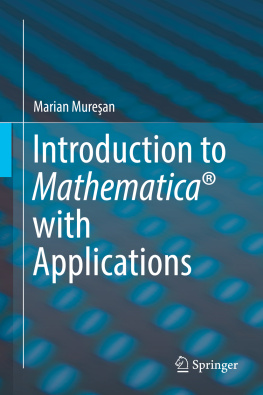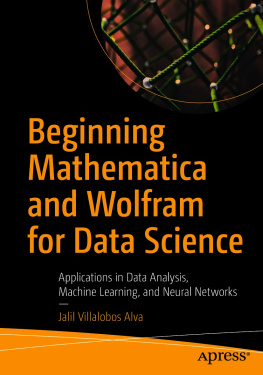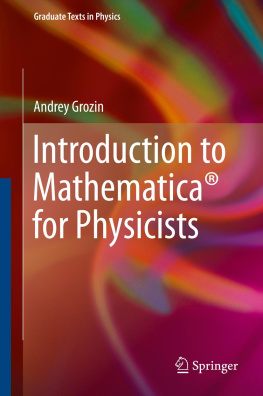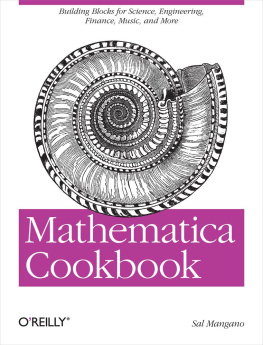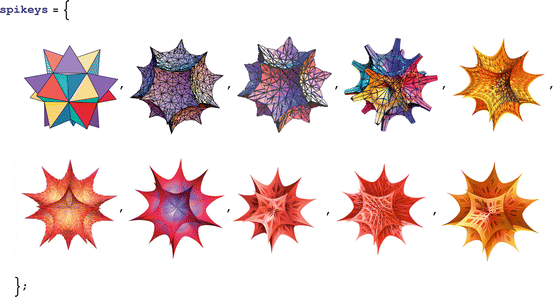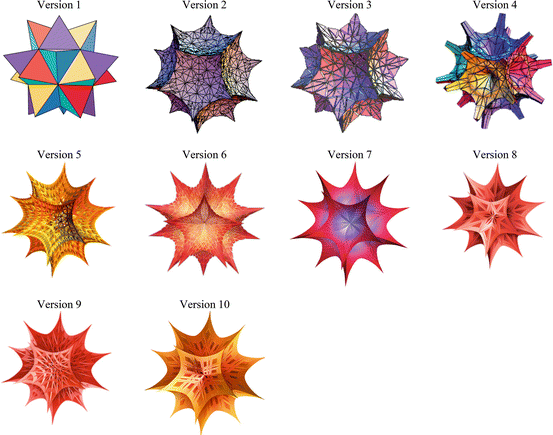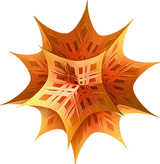Abell, M.L., Braselton, J.P.: Differential Equations with Mathematica . AP Professional, Boston (1993)
Adamchik, V., Wagon, S.: A 2000-year search changes direction. Math. Educ. Res. (1), 1119 (1996). {w}ww.cs.cmu.edu/~adamchik/articles/pi/pi.htm
Adamchik, V., Wagon, S.: A simple formula for . Am. Math. Mon. (9), 852855 (1997)
Alexander, R.: Diagonally implicit Runge-Kutta methods for stiff O.D.Es. SIAM J. Numer. Anal. (6), 10061021 (1977)
Backhouse, N.: Pancake functions and approximations to . Math. Gaz. , 371374 (1995). Note 79.36
Bailey, D.H., Borwein, P.B., Plouffe, S.: On the rapid computation of various polylogarithmic constants. Math. Comput. (218), 903913 (1997) MathSciNet CrossRef MATH
Baruah, D.N., Berndt, B.C., Chan, H.H.: Ramanujans series for 1: a survey. Am. Math. Mon. (7), 567587 (2009) MathSciNet CrossRef MATH
Bellard, F.: Computation of the nth digit of in any base in O ( n 2) (1997). fabrice.bellard.free.fr/pi/
Borwein, J.M., Borwein, P.B.: The class three Ramanujan type series for 1. J. Comput. Appl. Math. (12), 281290 (1993)
Borwein, J.M., Borwein, P.B., Bailey, D.H.: Ramanujan, modular equations, and approximations to or how to compute one billion digits of . Am. Math. Mon. (3), 201219 (1989)
Borwein, J.M., Skerritt, M.P.: An Introduction to Modern Mathematical Computing with Mathematica . Springer Undergraduate Text in Mathematics and Technology. Springer, New York (2012)
Brun, V.: Carl Strmer in memoriam. Acta Math. (12), IVII (1958)
Bryson, A.E., Ho, Y.C.: Applied Optimal Control: Optimization, Estimation, and Control. Halsted Press, New York (1975)
Burns, R.E., Singleton, L.G.: Ascent from the lunar surface. Technical report TN D-1644, NASA, George C. Marshall Space Flight Center, Huntsville (1965)
Cesari, L.: OptimizationTheory and Applications. Problems with Ordinary Differential Equations. Applications of Mathematics, vol. 17. Springer, New York (1983)
Champion, B.: General Visualization Quick Start. Wolfram Research, Champaign (2013).{w}ww.wolfram.com/training/courses/vis412.html
Chudnovsky, D.V., Chudnovsky, G.V.: The computation of classical constants. Proc. Natl. Acad. Sci. USA (21), 81788182 (1989) MathSciNet CrossRef MATH
Cloitre, B.: A BBP formula for 2 in golden base (2003). abcloitre@wanadoo.fr
Dennis Lawrence, J.: A Catalog of Special Plane Curves. Dover, New York (1972)
Don, E.: Mathematica. Schaums Outlines Series. McGraw Hill, New York (2009)
Ebbinghaus, H.D., Peckhaus, V.: Ernst Zermelo. An Approach to His Life and Work. Springer, Berlin/Heidelberg (2007)
Elkies, N.D.: On a 4 + b 4 + c 4= d 4. Math. Comput. (184), 825835 (1988)
Fay, T.H.: The butterfly curve. Am. Math. Mon. (5), 442443 (1989) CrossRef
Ferguson, H., Gray, A., Markvorsen, S.: Costas minimal surface via Mathematica . Math. Educ. Res. (1), 510 (1966)
Finch, S.R.: Zermelos navigation problem. In: Mathematical Constants II. Encyclopedia of Mathematics and Its Applications. Cambridge University Press, Cambridge (Forthcoming)
Floyd, R.W.: Algorithm 245: treesort. Commun. ACM (12), 701 (1964) CrossRef
Frye, R.E.: Finding 958004 + 2175194 + 4145604=4224814 on the connection machine. In: Proceedings of Supercomputing88. Science and Applications, vol. 2, pp. 106116 (1988)
Gourevitch, B., Guillera Goyanes, J.: Construction of binomial sums for and polylogarithmic constants inspired by BBP formula. Appl. Math. E-Notes , 237246 (2007). www.math.nthu.edu.tw/~amen
Gradshteyn, S.G., Ryzhik, I.M.: Tables of Integrals, Series, and Products, 7th edn. Elsevier, Amsterdam (2007) MATH
Guillera, J., Zudilin, W.: Ramanujan-type for 1: the art of translation. In: Bruce, D.P., Berndt, C. (eds.) The Legacy of Srinivasa Ramanujan. Lecture Notes Series, vol. 20, pp. 181195. Ramanujan Mathematical Society (2013). arXiv 1302.0548
Hartman, P.: Ordinary Differential Equations, 1st edn. Wiley, Hoboken (1964) MATH
Hastings, C., Mischo, K., Morrison, M.: Hands-On Start to Wolfram Mathematica and Programming with the Wolfram Language TM . Wolfram Media, Champaign (2015)
Hazrat, R.: Mathematica: A Problem-Centered Approach. Springer Undergraduate Mathematics Series, vol. 53. Springer, London (2010)
Hoare, C.A.R.: Algorithm 64: quicksort. Commun. ACM (7), 321 (1961) CrossRef
Hull, D.G.: Optimal guidance for Lunar ascent. Adv. Astronaut. Sci. , 275285 (2009). Proccedings of the AAS Space Flight Machanics Meeting, Savannach
Hull, D.G.: Optimal guidance for quasi-planar Lunar ascent. J. Optim. Theory Appl. (2), 353372 (2011) MathSciNet CrossRef MATH
Hull, D.G., Harris, M.W.: Optimal solutions for quasiplanar ascent over a spherical Moon. J. Guid. Control Dyn. (4), 12181224 (2012). doi: 10.2514/1.55443 CrossRef
Knuth, D.E.: The Art of Computer Programming. Sorting and Searching. Computer Science and Information Processing, vol. 3. Addison-Wesley, Reading (1973)

